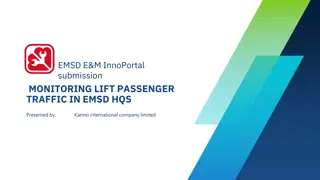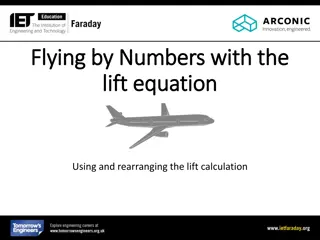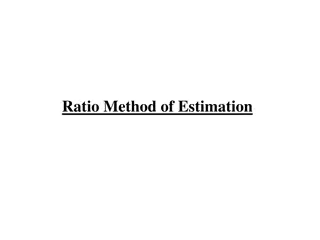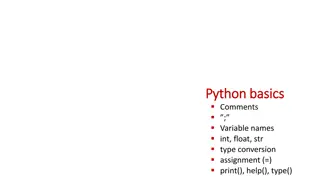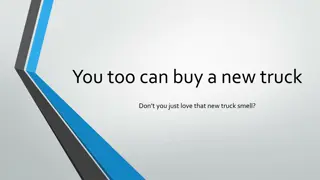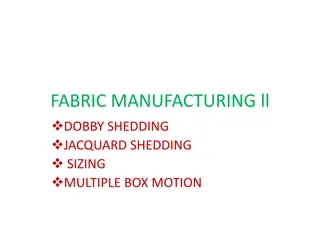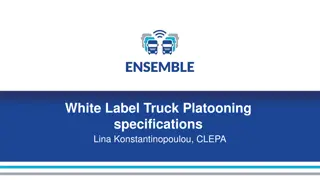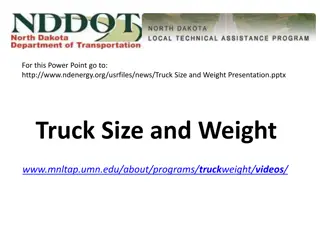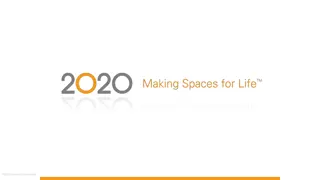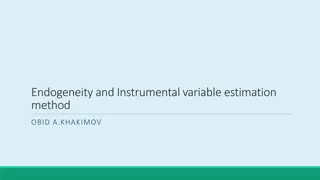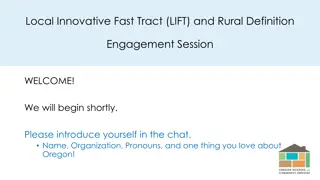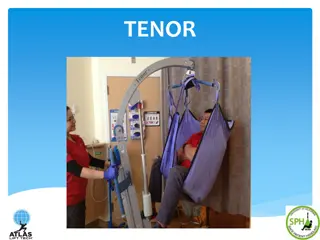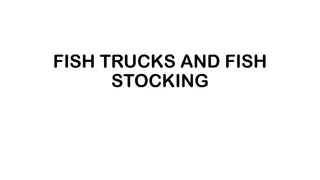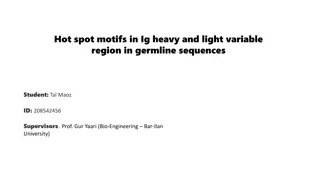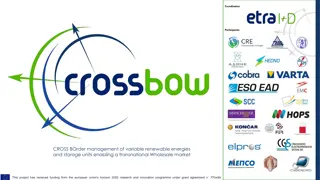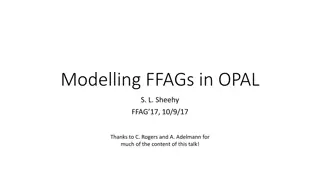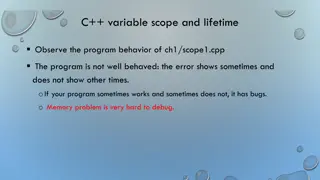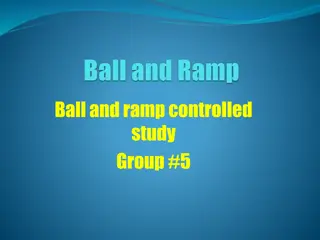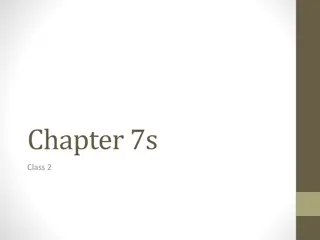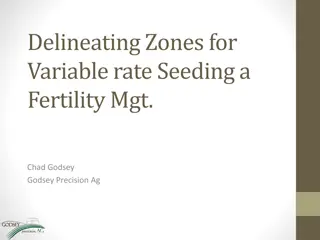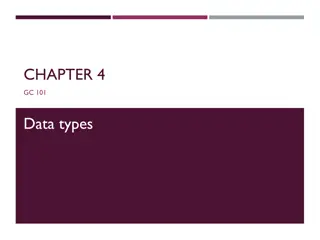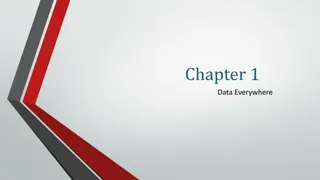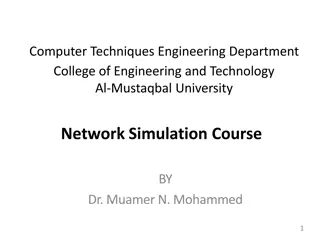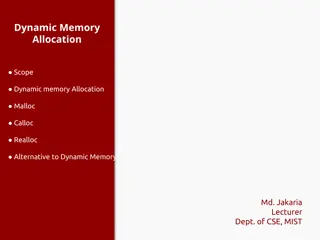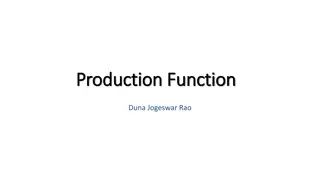
JCB TLT 30D High Lift, TLT 35D, TLT 35D 4×4 TELETRUK (VARIABLE REACH TRUCK) Service Repair Manual Instant Download (SN 2252520 and up)
Please open the website below to get the complete manualnn//
Download Presentation

Please find below an Image/Link to download the presentation.
The content on the website is provided AS IS for your information and personal use only. It may not be sold, licensed, or shared on other websites without obtaining consent from the author. Download presentation by click this link. If you encounter any issues during the download, it is possible that the publisher has removed the file from their server.
E N D
Presentation Transcript
Foreword The Operator's Manual You and others can be killed or seriously injured if you operate or maintain the machine without first studying the Operator's Manual. You must understand and follow the instructions in the Operator's Manual. If you do not understand anything, ask your employer or JCB dealer to explain it. SERVICE MANUAL Do not operate the machine without an Operator's Manual, or if there is anything on the machine you do not understand. Treat the Operator's Manual as part of the machine. Keep it clean and in good condition. Replace the Operator's Manual immediately if it is lost, damaged or becomes unreadable. TELETRUK (VARIABLE REACH TRUCK) TLT 30D High Lift, TLT 35D, TLT 35D 4x4 Contents 01 - Machine 03 - Attachments, Couplings and Load Handling 06 - Body and Framework 09 - Operator Station 12 - Heating, Ventilating Conditioning (HVAC) 15 - Engine 18 - Fuel and Exhaust System 21 - Cooling System 24 - Brake System 25 - Steering System 27 - Driveline 30 - Hydraulic System 33 - Electrical System 72 - Fasteners and Fixings 75 - Consumable Products 78 - After Sales and Air- EN - 9813/2500 - ISSUE 4 - 08/2017 This manual contains original instructions, verified by the manufacturer (or their authorized representative). Copyright 2017 JCB SERVICE All rights reserved. No part of this publication may be reproduced, stored in a retrieval system, or transmitted in any form or by any other means, electronic, mechanical, photocopying or otherwise, without prior permission from JCB SERVICE. www.jcb.com
15 - Engine 06 - Cylinder Head 00 - General Calibrate Remove and Install For: Kohler KDI 1903 TCR ........ Page 15-39 For: Kohler KDI 2504 TCR ........ Page 15-41 Flatness Check Put the cylinder head on a surface plate and measure its flatness with a dial gauge. (For: Kohler KDI 1903 TCR) Consumables Description Cleaner/Degreaser - General purpose solvent based parts cleaner If the level deviation is greater than 0.10mm (0.004in), the cylinder head must be machined. The cylinder head should not be machined more than 0.20mm (0.008in) in depth. Part No. 4104/1557 Size 0.4L Figure 100. CAUTION This component is heavy. It must only be removed or handled using a suitable lifting method and device. B Before Removal 1. This procedure requires service parts. Make sure you have obtained the correct parts before you start, refer to Parts Catalogue. A 2. Make sure that the engine is safe to work on. If the engine has been running, let it cool before you start the service work. A Cylinder head B Dial gauge 3. Get access to the engine. 4. Remove the thermostat. Refer to: PIL 21-12-00. 5. Remove the exhaust manifold. Refer to: PIL 18-24-04. 6. Remove the inlet manifold. Refer to: PIL 18-24-03. 7. Remove the rocker cover. Refer to: PIL 15-42-06. 8. Remove the rocker assembly. Refer to: PIL 15-42-00. Remove Make sure that the engine is at ambient temperature before you remove the cylinder head, to prevent deformation. 1. Remove the bolts that attach the cylinder head to the crankcase. Note that the bolts must not be re-used. Discard the bolts. 15 - 39 9813/2500-4 15 - 39
15 - Engine 06 - Cylinder Head 00 - General Figure 101. Figure 103. M B N C A L L Piston M Crankcase N Measuring points A Cylinder head B Bolt C Eye-bolt 3.1. Turn the crankshaft to put the piston at TDC (Top Dead Centre). 2. Carefully lift the cylinder head from the crankcase. Only use the eye-bolts installed on the cylinder head to move the cylinder head. 3.2. Put a dial gauge on the crankcase and measure the piston protrusion from the crankcase surface. 3. Remove and discard the head gasket. 3.3. Do step 3.2 again for all the pistons. Figure 102. 3.4. Record the highest mean value by applying the fraction given in Refer to Table 26. D 4. Make sure that all items are clean and free from damage and corrosion. Table 26. Fraction Number of identifica- tion hole 0.03 0.126mm D Head gasket 0.127 0.25mm 4. Using a suitable cleaning agent, carefully remove all traces of the head gasket material from the cylinder head and crankcase mating faces. Consumable: Cleaner/Degreaser - General purpose solvent based parts cleaner 0.251 0.375mm 5. Check the cylinder head and crankcase mating faces for signs of damage and distortion. Refer to: PIL 15-06-00. Assemble 1. Replacement is the reversal of the removal procedure. Before Assembly 1. Measure the injector projection. Refer to: PIL 18-18-00. 2. Position a new head gasket on to the crankcase mating face. Make sure that the gasket is installed in the correct orientation and correctly aligned with the bushings. 2. Obtain the correct new cylinder head bolts. Note that the original bolts must not be re-used. 3. Obtain the correct replacement head gasket. Note the number of identification holes as shown in Refer to Table 26. 15 - 40 9813/2500-4 15 - 40
https://www.ebooklibonline.com Hello dear friend! Thank you very much for reading. Enter the link into your browser. The full manual is available for immediate download. https://www.ebooklibonline.com
15 - Engine 06 - Cylinder Head 00 - General Figure 104. 6. Tighten the bolts in six stages, use the torque and angle method. Refer to: PIL 72-00-00. Q D 6.1. Tighten the bolts, starting with the middle pair and working outwards (in sequence 1-10) to the 1st stage pre-torque. M 6.2. Then, further tighten the bolts, starting with the middle pair and working outwards (in sequence 1-10) to the 2nd stage pre- torque. P 6.3. Then, re-tighten the bolts, starting with the middle pair and working outwards (in sequence 1-10) to the 3rd stage pre-torque. D Head gasket M Crankcase P Centering bushings Q Identification holes 6.4. Use the angle gauge to angle tighten the bolts, starting with the middle pair and working outwards (in sequence 1-10) to the 4th stage pre-torque. As a visual check, match mark the bolts to the cylinder head before you start. When the bolts have been angle tightened, the match marks will appear as shown. 3. Lower the cylinder head on to the crankcase. Make sure that the cylinder head is correctly aligned with the bushings. Figure 105. Figure 107. A P P 0 + 90 + 90 + 90 6.5. Then, further angle tighten the bolts, starting with the middle pair and working outwards (in sequence 1- 10) to the 5th stage pre-torque. 6.6. Finally, angle tighten the bolts, starting with the middle pair and working outwards (in sequence 1- 10) for the final stage torque. A Cylinder head P Bushings Table 27. 4. Install the new cylinder head bolts. Description Cylinder head to crankcase bolts 1-10 - first stage torque - second stage torque - third stage torque - fourth stage torque - fifth stage torque - final stage torque Torque Value 5. Tighten the bolt to the correct torque value. Strictly follow the torque sequence shown. 40N m 70N m 100N m 90 90 90 Figure 106. 1 3 7 5 8 (For: Kohler KDI 2504 TCR) Consumables Description Cleaner/Degreaser - General purpose solvent based parts cleaner Part No. 4104/1557 Size 0.4L 4 2 6 15 - 41 9813/2500-4 15 - 41
15 - Engine 06 - Cylinder Head 00 - General CAUTION This component is heavy. It must only be removed or handled using a suitable lifting method and device. 2. Carefully lift the cylinder head from the crankcase. Only use the eye-bolts installed on the cylinder head to move the cylinder head. 3. Remove and discard the head gasket. Before Removal Figure 109. 1. This procedure requires service parts. Make sure you have obtained the correct parts before you start, refer to Parts Catalogue. D 2. Make sure that the engine is safe to work on. If the engine has been running, let it cool before you start the service work. 3. Get access to the engine. 4. Remove the thermostat. Refer to: PIL 21-12-00. 5. Remove the exhaust manifold. Refer to: PIL 18-24-04. D Head gasket 4. Using a suitable cleaning agent, carefully remove all traces of the head gasket material from the cylinder head and crankcase mating faces. Consumable: Cleaner/Degreaser - General purpose solvent based parts cleaner 6. Remove the inlet manifold. Refer to: PIL 18-24-03. 7. Remove the rocker cover. Refer to: PIL 15-42-06. 5. Check the cylinder head and crankcase mating faces for signs of damage and distortion. Refer to: PIL 15-06-00. 8. Remove the rocker assembly. Refer to: PIL 15-42-00. Before Assembly Remove 1. Measure the injector projection. Refer to: PIL 18-18-00. Make sure that the engine is at ambient temperature before you remove the cylinder head, to prevent deformation. 2. Obtain the correct new cylinder head bolts. Note that the original bolts must not be re-used. 1. Remove the bolts that attach the cylinder head to the crankcase. Note that the bolts must not be re-used. Discard the bolts. 3. Obtain the correct replacement head gasket. Note the number of identification holes as shown in Refer to Table 28. Figure 108. Figure 110. B M C A N L A Cylinder head B Bolt C Eye-bolt L Piston M Crankcase N Measuring points 15 - 42 9813/2500-4 15 - 42
15 - Engine 06 - Cylinder Head 00 - General 3.1. Turn the crankshaft to put the piston at TDC. Figure 112. A 3.2. Put a dial gauge on the crankcase and measure the piston protrusion from the crankcase surface. 3.3. Do step 3.2 again for all the pistons. P 3.4. Record the highest mean value by applying the fraction given in Refer to Table 28. P 4. Make sure that all items are clean and free from damage and corrosion. Table 28. Fraction Number of identifica- tion hole A Cylinder head P Bushings 0.03 0.126mm 4. Install the new cylinder head bolts. 5. Tighten the bolt to the correct torque value. Strictly follow the torque sequence shown. 0.127 0.25mm Figure 113. 0.251 0.375mm 10 7 5 1 3 9 Assemble 1. Replacement is the reversal of the removal procedure. 2. Position a new head gasket on to the crankcase mating face. Make sure that the gasket is installed in the correct orientation and correctly aligned with the bushings. 4 2 6 8 6. Tighten the bolts in six stages, use the torque and angle method. Refer to: PIL 72-00-00. Figure 111. Q D 6.1. Tighten the bolts, starting with the middle pair and working outwards (in sequence 1-10) to the 1st stage pre-torque. M 6.2. Then, further tighten the bolts, starting with the middle pair and working outwards (in sequence 1-10) to the 2nd stage pre- torque. P 6.3. Then, re-tighten the bolts, starting with the middle pair and working outwards (in sequence 1-10) to the 3rd stage pre-torque. D Head gasket M Crankcase P Centering bushings Q Identification holes 6.4. Use the angle gauge to angle tighten the bolts, starting with the middle pair and working outwards (in sequence 1-10) to the 4th stage pre-torque. As a visual check, match mark the bolts to the cylinder head before you start. When the bolts have 3. Lower the cylinder head on to the crankcase. Make sure that the cylinder head is correctly aligned with the bushings. 15 - 43 9813/2500-4 15 - 43
15 - Engine 06 - Cylinder Head 00 - General been angle tightened, the match marks will appear as shown. Figure 114. 0 + 90 + 90 + 90 6.5. Then, further angle tighten the bolts, starting with the middle pair and working outwards (in sequence 1- 10) to the 5th stage pre-torque. 6.6. Finally, angle tighten the bolts, starting with the middle pair and working outwards (in sequence 1- 10) for the final stage torque. Table 29. Description Cylinder head to crankcase bolts 1-10 - first stage torque - second stage torque - third stage torque - fourth stage torque - fifth stage torque - final stage torque Torque Value 40N m 70N m 100N m 90 90 90 15 - 44 9813/2500-4 15 - 44
15 - Engine 09 - Bedplate 00 - General 00 - General Introduction Introduction .................................................... 15-47 Remove and Install ....................................... 15-48 The bedplate acts as the main strength component of the engine. it maintains the correct alignment and supports the weight of the internal components. Figure 115. 1 2 1 Bedplate 2 Crankcase 15 - 47 9813/2500-4 15 - 47
15 - Engine 09 - Bedplate 00 - General Remove and Install 14. Remove the timing gear front case. Refer to: PIL 15-51-21. For: Kohler KDI 1903 TCR ........ Page 15-48 For: Kohler KDI 2504 TCR ........ Page 15-51 15. Remove the fuel injection pump. Refer to: PIL 18-18-15. (For: Kohler KDI 1903 TCR) 16. Remove the fuel injection drive gear. Refer to: PIL 15-51-00. Consumables Description Cleaner/Degreaser - General purpose solvent based parts cleaner Part No. 4104/1557 Size 0.4L 17. Remove the intermediate drive gear. Refer to: PIL 15-51-00. 18. Remove the high duty PTO (Power Take-Off) device (if installed). CAUTION This component is heavy. It must only be removed or handled using a suitable lifting method and device. 19. Remove the fuel injectors. Refer to: PIL 18-18-03. 20. Remove the rocker cover. Refer to: PIL 15-42-06. Before Removal 1. This procedure requires service parts. Make sure you have obtained the correct service parts before you start, refer to Parts Catalogue. 21. Remove the rocker assembly including the push rods. Refer to: PIL 15-42-00. 2. Make sure that the engine is safe to work on. If the engine has been running, let it cool before you start the service work. 22. It is not necessary to remove the cylinder head assembly to remove the bedplate. If however, the cylinder head needs to be removed for other reasons (for piston and connecting rod removal for example) remove it now. Refer to: PIL 15-06-00. 3. Get access to the engine. 4. Remove the drive belt. Refer to: PIL 15-18-03. 23. Position the engine upside down in a suitable jig or fixture, supported at the front of the crankcase. 5. Remove the oil sump. Refer to: PIL 15-45-00. Remove 6. Remove the turbocharger (if installed). 1. Remove the main bearing bolts in the sequence shown. 7. Remove the exhaust manifold. Refer to: PIL 18-24-04. Figure 116. 8. Remove the starter motor. Refer to: PIL 15-75-00. 9. Remove the flywheel housing. Refer to: PIL 15-54-03. B 10. Remove the crankshaft rear oil seal flange. Refer to: PIL 15-12-09. 11. Remove the EGR (Exhaust Gas Recirculation) (if installed). A 12. Remove the inlet manifold. Refer to: PIL 18-24-03. A Bedplate B Main bearing bolts (x8) 13. Disconnect and remove the high and low pressure fuel pipes. Refer to: PIL 18-96-00. 2. Remove the bedplate peripheral bolts in the sequence shown. 15 - 48 9813/2500-4 15 - 48
15 - Engine 09 - Bedplate 00 - General Figure 117. available prior to assembling the components. The parts must be installed and tightened to the correct torque value within 5min minutes (with a maximum permissible time of 15min). Important: BEFORE you install the bedplate: DO NOT rotate the crankshaft. Make sure that the upper main bearing shells are flush with the bottom face of the crankcase. C Install Important: The crankshaft half bearings are made of special material. Therefore, they must be replaced every time they are removed to prevent seizures. The lower and upper crankshaft half bearings cannot be replaced singularly, and both halves must be replaced together. C Peripheral bolts (x13) 3. Carefully separate the bedplate from the crankcase. Use suitable lifting equipment (if the bedplate is lifted manually, two people will be required). Do not use a lever to separate the bedplate. 1. Make sure that all items are clean and free from damage and corrosion. 2. Use a suitable degreasing agent to clean both sides of the lower bearing shells. Consumable: Cleaner/Degreaser - General purpose solvent based parts cleaner 4. Carefully remove the lower bearing shells from the bedplate. Figure 118. 3. Install the lower bearing shells into the bedplate. Make sure that the reference notches are at the correct location. A Figure 119. E D D A Bedplate D Lower bearing shells (x4) Before Installation A A Bedplate D Lower bearing shells (x4) E Reference notch 1. Clean off all traces of the old sealant compound from the crankcase and bedplate mating faces. 2. Use a suitable degreasing agent to carefully clean the main bearing saddles in the bedplate and crankcase. Take care not to block the oil ways or the piston cooling jets. Consumable: Cleaner/Degreaser - General purpose solvent based parts cleaner 4. Lubricate the lower bearing shells with clean engine oil. 5. Install the two shoulder half-rings onto the lower crankcase. Apply two dots of ITP GX100 grease to hold the rings in position. Important: Anaerobic sealant will not start to cure whilst it is open to the atmosphere, however when air is excluded (for instance when the two parts are put together) it will immediately start to harden. Make sure that all the necessary tools, bolts etc. are readily 15 - 49 9813/2500-4 15 - 49
15 - Engine 09 - Bedplate 00 - General Figure 120. Figure 122. F D G D Lower bearing shells (x4) F Shoulder half-rings (x2) G Guide pins 12. Install the bedplate peripheral bolts (x13). 6. Apply a 1.0mm (0.04in) thick bead of Loctite 5188 around the crankcase/bedplate mating face as shown. 13. Tighten the bolts to the correct torque value in two stages. Strictly follow the torque sequence shown. Figure 121. Figure 123. L H J K H Crankcase J Loctite 5188 K Oil feed holes L Return oil grooves 7. Make sure that you do not block the oil feed holes and the return oil grooves. Important: If the parts have not been tightened to the correct torque value within the maximum 15min time period, then the parts must be separated, thoroughly cleaned and fresh sealant should be applied. 8. Assemble the bedplate to the crankcase. Make sure that the guide pins on the crankcase are engaged properly in the slots on the bedplate. After Installation 9. Note: The bedplate is heavy. Two people will be required to lift and rotate the bedplate safely on to the crankcase. 1. Check that the crankshaft can be freely rotated by hand. 2. Measure the crankshaft end float. Make sure that the end float is between 0.18mm (0.007in) and 0.38mm (0.015in). 10. Install the main bearing bolts (x8). 11. Tighten the bolts to the correct torque value in three stages. Strictly follow the torque sequence shown. 3. Carry out the procedures listed in the 'Before Removal' section in reverse order. 15 - 50 9813/2500-4 15 - 50
15 - Engine 09 - Bedplate 00 - General Table 30. Torque Values 11. Remove the EGR (if installed). Item B Description Main bearing bolts (x8) (1st Stage) Main bearing bolts (x8) (2nd Stage) Main bearing bolts (x8) (3rd Stage) Peripheral bolts (x13) (4th Stage) Peripheral bolts (x13) (5th Stage) Nm 40 12. Remove the inlet manifold. Refer to: PIL 18-24-03. B 70 13. Disconnect and remove the high and low pressure fuel pipes. Refer to: PIL 18-96-00. B 120 14. Remove the timing gear front case. Refer to: PIL 15-51-21. C 20 C 35 15. Remove the fuel injection pump. Refer to: PIL 18-18-15. (For: Kohler KDI 2504 TCR) 16. Remove the fuel injection drive gear. Refer to: PIL 15-51-00. Consumables Description Cleaner/Degreaser - General purpose solvent based parts cleaner Part No. 4104/1557 Size 0.4L 17. Remove the intermediate drive gear. Refer to: PIL 15-51-00. 18. Remove the high duty PTO device (if installed). 19. Remove the fuel injectors. Refer to: PIL 18-18-03. CAUTION This component is heavy. It must only be removed or handled using a suitable lifting method and device. 20. Remove the rocker cover. Refer to: PIL 15-42-06. Before Removal 21. Remove the rocker assembly including the push rods Refer to: PIL 15-42-00. 1. This procedure requires service parts. Make sure you have obtained the correct service parts before you start, refer to Parts Catalogue. 2. Make sure that the engine is safe to work on. If the engine has been running, let it cool before you start the service work. 22. It is not necessary to remove the cylinder head assembly to remove the bedplate. If however, the cylinder head needs to be removed for other reasons (for piston and connecting rod removal for example) remove it now. Refer to: PIL 15-06-00. 3. Get access to the engine. 4. Remove the drive belt. Refer to: PIL 15-18-03. 23. Position the engine upside down in a suitable jig or fixture, supported at the front of the crankcase. 5. Remove the oil sump. Refer to: PIL 15-45-00. Remove 6. Remove the turbocharger(if installed). 1. Remove the main bearing bolts in the sequence shown. 7. Remove the exhaust manifold. Refer to: PIL 18-24-04. 8. Remove the starter motor. Refer to: PIL 15-75-00. 9. Remove the flywheel housing. Refer to: PIL 15-54-03. 10. Remove the crankshaft rear oil seal flange. Refer to: PIL 15-12-09. 15 - 51 9813/2500-4 15 - 51
15 - Engine 09 - Bedplate 00 - General Figure 124. Figure 126. A B D A A Bedplate B Main bearing bolts (x10) A Bedplate D Lower bearing shells (x5) 2. Remove the bedplate peripheral bolts in the sequence shown. Before Installation Figure 125. 1. Clean off all traces of the old sealant compound from the crankcase and bedplate mating faces. 2. Use a suitable degreasing agent to carefully clean the main bearing saddles in the bedplate and crankcase. Take care not to block the oil ways or the piston cooling jets. Consumable: Cleaner/Degreaser - General purpose solvent based parts cleaner C Important: Anaerobic sealant will not start to cure whilst it is open to the atmosphere, however when air is excluded (for instance when the two parts are put together) it will immediately start to harden. Make sure that all the necessary tools, bolts etc. are readily available prior to assembling the components. The parts must be installed and tightened to the correct torque value within 5min minutes (with a maximum permissible time of 15min). C Peripheral bolts (x17) 3. Carefully separate the bedplate from the crankcase. Use suitable lifting equipment (if the bedplate is lifted manually, two people will be required). Do not use a lever to separate the bedplate. Important: Before installing the bedplate: Do not rotate the crankshaft. Make sure that the upper main bearing shells are flush with the bottom face of the crankcase. 4. Carefully remove the lower bearing shells from the bedplate. Install Important: The crankshaft half bearings are made of special material. Therefore, they must be replaced every time they are removed to prevent seizures. The lower and upper crankshaft half bearings cannot be replaced singularly, and both halves must be replaced together. 1. Make sure that all items are clean and free from damage and corrosion. 2. Use a suitable degreasing agent to clean both sides of the lower bearing shells. 15 - 52 9813/2500-4 15 - 52
15 - Engine 09 - Bedplate 00 - General Consumable: Cleaner/Degreaser - General purpose solvent based parts cleaner Figure 129. L 3. Install the lower bearing shells into the bedplate. Make sure that the reference notches are at the correct location. H Figure 127. J E K D H Crankcase J Loctite 5188 K Oil feed holes L Return oil grooves 7. Make sure that you do not block the oil feed holes and the return oil grooves. A 8. Assemble the bedplate to the crankcase. Make sure that the guide pins on the crankcase are engaged properly in the slots on the bedplate. A Bedplate D Lower bearing shells (x5) E Reference notch 9. Note: The bedplate is heavy. Two people will be required to lift and rotate the bedplate safely on to the crankcase. 4. Lubricate the lower bearing shells with clean engine oil. 5. Install the two shoulder half-rings onto the lower crankcase. Apply two dots of ITP GX100 grease to hold the rings in position. 10. Install the main bearing bolts (x10). 11. Tighten the bolts to the correct torque value in three stages. Strictly follow the torque sequence shown. Figure 128. Figure 130. F D B G D Lower bearing shells (x5) F Shoulder half-rings (x2) G Guide pins A 6. Apply a 1.0mm (0.04in) thick bead of Loctite 5188 around the crankcase/bedplate mating face as shown. 12. Install the bedplate peripheral bolts (x17). 13. Tighten the bolts to the correct torque value in two stages. Strictly follow the torque sequence shown. 15 - 53 9813/2500-4 15 - 53
15 - Engine 09 - Bedplate 00 - General Figure 131. C Important: If the parts have not been tightened to the correct torque value within the maximum 15min time period, then the parts must be separated, thoroughly cleaned and fresh sealant should be applied. After Installation 1. Check that the crankshaft can be freely rotated by hand. 2. Measure the crankshaft end float. Make sure that the end float is between 0.18mm (0.007in) and 0.38mm (0.015in). 3. Carry out the procedures listed in the 'Before Removal' section in reverse order. Table 31. Torque Values Item B Description Main bearing bolts (x10) (1st Stage) Main bearing bolts (x10) (2nd Stage) Main bearing bolts (x10) (3rd Stage) Peripheral bolts (x17) (4th Stage) Peripheral bolts (x17) (5th Stage) Nm 40 B 70 B 120 C 20 C 35 15 - 54 9813/2500-4 15 - 54
15 - Engine 12 - Crankshaft 00 - General 00 - General Introduction Introduction .................................................... 15-57 Technical Data ............................................... 15-58 Component Identification ............................... 15-58 Operation ....................................................... 15-59 Check (Condition) .......................................... 15-60 Calibrate ........................................................ 15-61 Remove and Install ....................................... 15-63 The crankshaft is housed inside the crankcase. It is connected to the piston via a connecting rod, they form a simple mechanism that converts reciprocating motion into rotating motion. Refer to: PIL 15-00-00. 15 - 57 9813/2500-4 15 - 57
15 - Engine 12 - Crankshaft 00 - General Technical Data Component Identification Figure 132. Table 32. Main bearing journal di- ameter (x4) - min - max Connecting rod bearing journal diameter - min - max Maximum wear and ovality on journals Crankshaft end float - min - max (1) No visible damage/wear or marks 63.981mm (2.5189in) 64.00mm (2.5196in) 54.035mm (2.1274in) 54.066mm (2.1286in) (1) B 0.18mm ( 0.0070in) 0.38mm ( 0.0149in) A A Crankcase B Crankshaft 15 - 58 9813/2500-4 15 - 58
15 - Engine 12 - Crankshaft 00 - General Operation Refer to Camshaft-Operation PIL 15-15-00 diameter of the upper main bearing shell allows oil transfer to cross drillings in the crankshaft to feed each of the big end bearings. Crankshaft gear is 'splash' lubricated. Front and rear crankshaft oil seals prevent oil leakage from, and dirt ingress to, the engine. Lubrication Oil is fed from the main gallery via five drillings, one to each of the main bearings. A groove around the Figure 133. 1 Main gallery 3 Main bearings 5 Cross drillings 7 Crankshaft oil seal 2 Drillings (x5) 4 Big end bearings 6 Crankshaft gear 8 Crankshaft oil seal 15 - 59 9813/2500-4 15 - 59
15 - Engine 12 - Crankshaft 00 - General Check (Condition) 1. Check the main bearing surfaces for damage and excessive wear. Blocked or restricted oilways will cause oil starvation at the big end bearings. 2. Measure the crankshaft diameters to confirm they are within service limits. Refer to: PIL 15-12-00. 4. Check that the piston cooling oil sprayers are clear (if installed). If the sprayers cannot be cleared remove the fixing screws. Remove the sprayers and discard them. 3. Check that the oilway cross drillings in the crankshaft are clear and free from debris. Figure 134. A D B C E A Crankshaft C Oil spray jets (if installed) E Main bearing shells B Shoulder half-rings D Fixing screws 15 - 60 9813/2500-4 15 - 60
15 - Engine 12 - Crankshaft 00 - General Calibrate Axial clearance check 2. Measure the axial shift of the crankshaft with a dial gauge. The axial shift must range between 0.18-0.38mm (0.007-0.015in). 1. To measure the axial clearance of the crankshaft, it is necessary to assemble the shaft in the crankcase. 3. If the value is more than or less than the specified range, replace the shoulder rings. Figure 135. B A A Crankshaft B Dial gauge 15 - 61 9813/2500-4 15 - 61
15 - Engine 12 - Crankshaft 00 - General Dimensional Check 6. Measure the diameter of the crank-pins and main journals with a micrometer. 1. Make sure that you clean the crankshaft thoroughly with a suitable detergent. 7. Measure the internal diameter of the connecting rod and crankshaft half-bearings with a dial gauge. 2. Use a pipe cleaner into the lubrication ducts to remove any residual dirt. 8. Lubricate the contact surfaces with oil to prevent oxidation. 3. Use a compressed air jet to thoroughly clean the oil passages. 9. The crankshaft and connecting rod half-bearings must necessarily be replaced every time they are disassembled. 4. Check the surfaces of the main journals and crank-pins for wear limit, to see whether grinding is necessary. 10. Make sure that the measurements are within the allowable limits. 5. Install the half-bearings on the semi-crankcases, without crankshaft, and couple the semi- crankcases by tightening the fixing screws. Figure 136. A B C D A Crank-pin C Connecting rod half-bearing B Main journal D Crankshaft half-bearing 15 - 62 9813/2500-4 15 - 62
Suggest: If the above button click is invalid. Please download this document first, and then click the above link to download the complete manual. Thank you so much for reading
15 - Engine 12 - Crankshaft 00 - General Remove and Install Consumables Description Cleaner/Degreaser - General purpose solvent based parts cleaner 2. Make sure that the engine is safe to work on. If the engine has been running, let it cool before you start the service work. Part No. 4104/1557 Size 0.4L 3. Get access to the engine. 4. Remove the bedplate. Refer to: PIL 15-09-00. CAUTION This component is heavy. It must only be removed or handled using a suitable lifting method and device. 5. If the pistons and connecting rods have not been removed, then remove the main bearing caps. Refer to: PIL 15-12-00. Before Removal 1. This procedure requires service parts. Make sure you have obtained the correct service parts before you start, refer to Parts Catalogue. Figure 137. A B B C D E F A Crankshaft B Thrust Washers 15 - 63 9813/2500-4 15 - 63
https://www.ebooklibonline.com Hello dear friend! Thank you very much for reading. Enter the link into your browser. The full manual is available for immediate download. https://www.ebooklibonline.com

